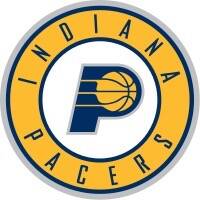Fundamentally speaking, the technique was all wrong.
And yet, like so many kids growing up in this state during the 1970s, my version of driveway basketball with friends included shooting the ball one-handed.
Why? Because that’s what George McGinnis was doing.
In those days, images of McGinnis, the statuesque 6-foot-8 Indiana Pacers power forward, were seen on the pages of newspapers and magazines far more than on television (or any of the countless other outlets we have today).
We saw. We admired. And, at one point or another, we tried to emulate.
There was just something cool about McGinnis creating rotation with the red, white and blue basketball, whether on the break or in a half-court setup. Whether he was using the glass, or trying to go without.
He was both easy and impossible to copy.
Built like an National Football League defensive end, Big Mac perfectly complemented the talents on the rosters of those powerhouse Pacers rosters from the ABA era.
The brute strength of no-nonsense 6-9 Mel Daniels in the middle proved intimidating enough; having McGinnis in the paint with him along with Mr. Clutch, the 6-5 Roger Brown, made for a front line few opponents could come close to duplicating.
Hearing the news that McGinnis passed away early Thursday morning at the age of 73, my mind immediately raced back to those driveway basketball games.
The one-handed fadeaway shots I attempted over the weak defense of buddies who laughed at me for averting any temptation to shoot the more standard jump shot. Of course, not long after, they were doing it, too — usually with results mirroring my own brickery.
McGinnis was that respected. That idolized.
Indiana boasts no shortage of basketball legends — Oscar Robertson, Bobby Plump Larry Bird and countless others. However, tie the prep, college and professional exploits of McGinnis together, and he might stand alone.
As a member of the 1968-69 Washington Continentals — still regarded as one of the top two or three boys high school teams to ever run onto a floor in this state — McGinnis, ultimately chosen as Mr. Basketball, was joined by Steve Downing, Wayne Pack and others as they ran roughshod over pretty much everyone on their way to a 31-0 record and a state title.
He and Downing, another 6-8 brick wall, would go on to play at Indiana University. Unable to play as a freshman due to the NCAA rules of that era, McGinnis led the Big Ten Conference in scoring (29.9) and rebounding (14.7) as a sophomore, earning third team All-American status.
McGinnis left IU after two seasons, was drafted by the hometown Pacers, and played 11 seasons of professional basketball, including stints with the Philadelphia 76ers and Denver Nuggets, before wrapping up his career back in Indy (1980-82).
He was a two-time ABA champion (1972 and ’73), three-time NBA All-Star and architect of a career responsible for 17,009 points and 9,233 rebounds. McGinnis’s final career averages were, appropriately enough, a double-double (20.2 ppg, 11.0 rpg).
In 2017, McGinnis was part of a class inducted into the Naismith Memorial Basketball Hall of Fame. He had gone into the Indiana Basketball Hall of Fame 22 years earlier.
Perhaps most fittingly, his No. 30 is one of four numbers retired by the Pacers and now hanging in the rafters of Gainbridge Fieldhouse, joining Daniels (34), Brown (35) and Reggie Miller (31).
Happy trails, Big Mac. Often imitated, never duplicated.
Mike Beas is a sportswriter for the Daily Journal. He can be reached at [email protected].





